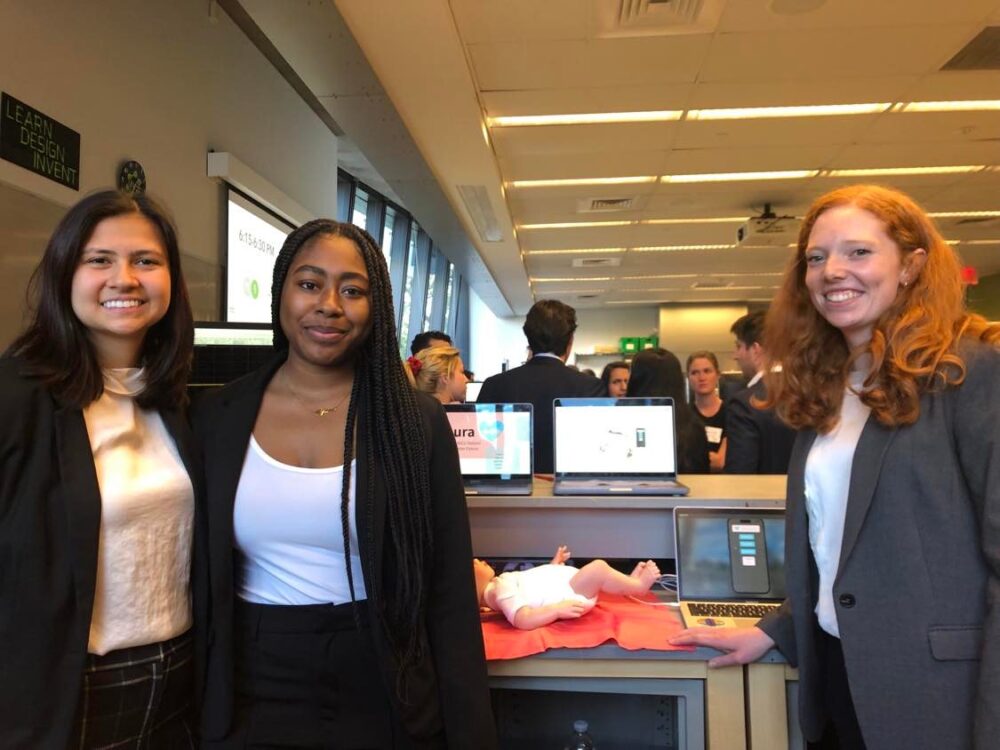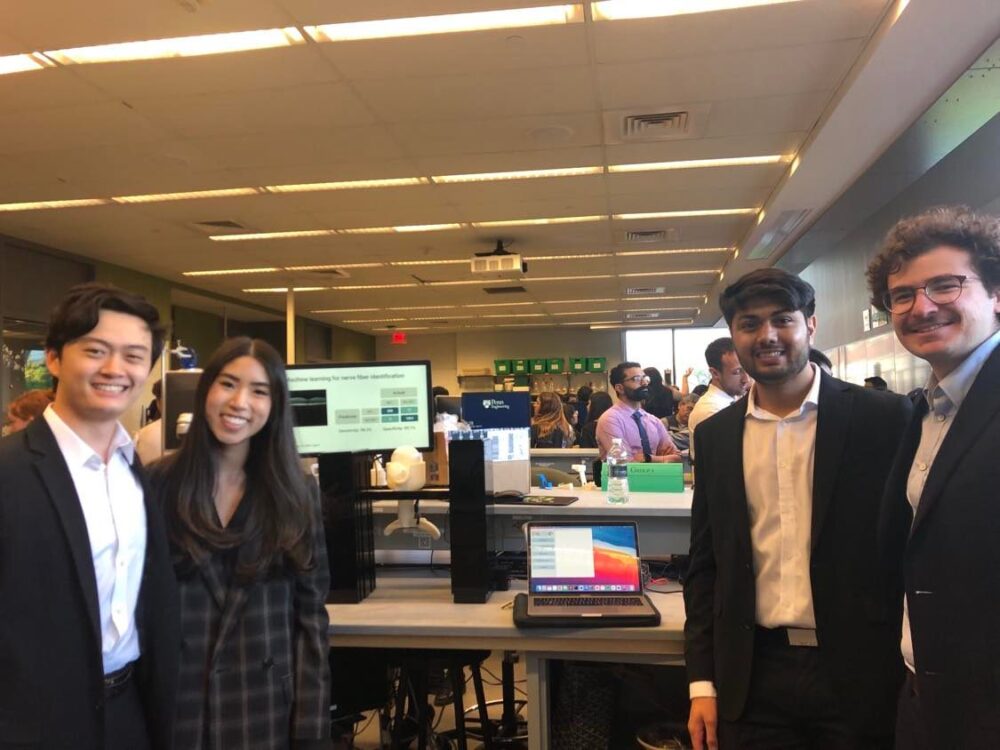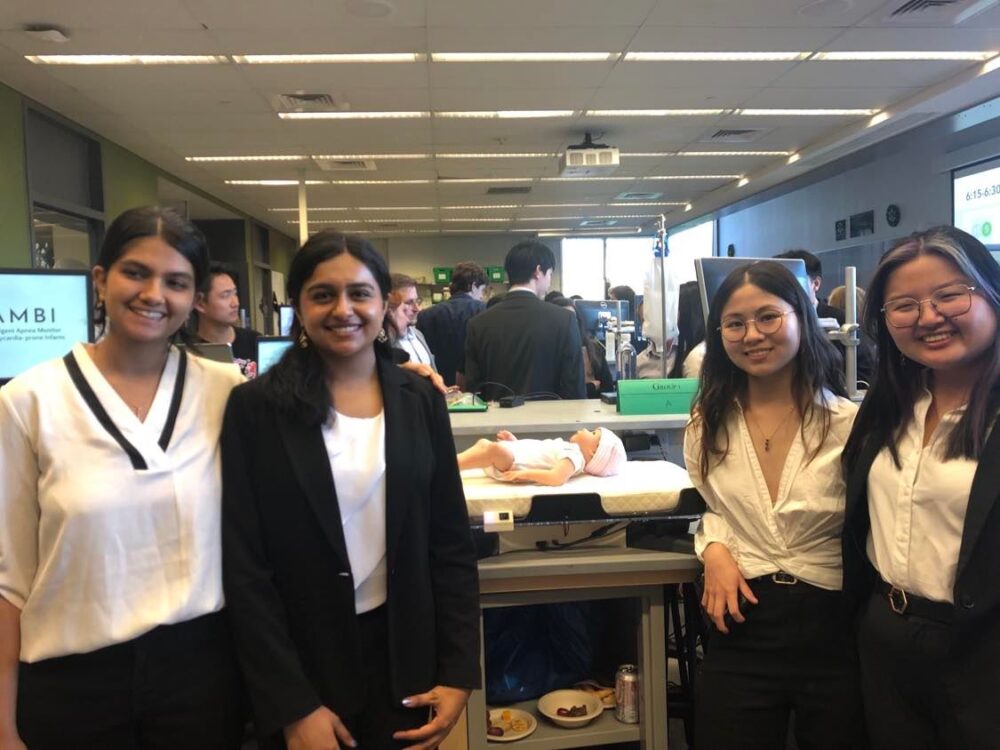How impressed would you be to know that college students in Philadelphia are creating tech-enabled solutions to current problems in the modern medical field?
This reporter, for one, was extremely impressed after attending the Senior Design Expo at the George H. Stephenson Foundation Educational Laboratory and Bio-MakerSpace at the University of Pennsylvania. Last Wednesday afternoon, the Bio-MakerSpace was packed with senior biomedical engineering students who were demonstrating their projects to a panel of judges and other members of the university community.
Earlier that day, the groups had given 10-minute presentations of their projects to a panel of judges, Sevile Mannickarottu, lab director of the Bio-MakerSpace, and an instructor for these design projects, told me. In the course of the day, students presented the challenge they were aiming to solve and the technical details of their solution. After, demonstrations sought to find if the devices really worked.
“[It’s] looking at the device as a whole, because quite frankly, you can say whatever you want at a presentation, does it really work,” said Mannickarottu. “You can make it look pretty, ‘but does it work?’ is the big question.”

Every senior biomedical engineering student has to complete a project over the course of a year, like a senior thesis, and these students started last summer. Mannickarottu said the students need plenty of time to talk to healthcare providers, clinicians and patients to learn more about what problems exist in the medical field.
“You have to think about several levels,” Mannickarottu said. “The medical doctor has their issues and nurses have their own concerns and then the patient has their own concerns.”
By December, the students were supposed to have a “minimum viable prototype”— a version of their device that worked but didn’t yet have to be perfect. They then had a few more months to finish their final version of the project. This reporter heard from students throughout the day that the project brought together everything they learned in the previous three years of their program.
“We had to do a little bit of chemistry for this project. We had some electronics, which we did in our lab courses. We were coding the app, so it was just a combination of all of the different engineering skills we learned,” said Anusha Keshireddy, whose group designed Smart-C, a wearable device and app that can detect infection in a surgical site after someone has a c-section.
“And it was really interesting to see that applied to a real problem, and also consider commercialization and the business aspects of the device as well,” she added.
Gabriella Daltoso echoed Keshireddy, saying that her group used what they learned in their signals and systems class, computer science classes and what they learned about electronics to build their device.
Daltoso’s group designed the Sonura Beanie, a wearable device for babies in the NICU that blocks out harmful background noise and allows vocal noises from caregivers to pass through to support “linguistic development.” They also designed an app for parents to record audio for their baby to listen to even when they aren’t in the hospital with them. Daltoso and her group said they plan to continue pursuing Sonura after they graduate.
“Some of our next steps include shrinking down some of the hardware and improving our mobile applications,” said Sophie Ishiwari, a Sonura group member. “And this is all culminating to applying for FDA approval. So that’s our next big milestone and what we hope to achieve, but we’re really excited and it’s really awesome working with this team.”

Mannickarottu said he ultimately wants the students to be proud of their work. A lot of students in the Penn engineering program don’t end up working in engineering post-grad, but he said he still wants them to feel like they are real engineers.
After this demo day, the judges chose three winners who will receive a cash prize and move forward to compete in a school-wide engineering competition. The three winners of the 2023 competition (in no particular order) were:
- BAMBI – The Biointelligent Apnea Monitor for Bradycardia-Prone Infants (BAMBI), which detects and treats apnea in premature babies in the NICU
- StablEyes – A device that allows more control over hand-held optical coherence tomography (OCT), a scan used in ophthalmology
- inSPIRE – This device is a “smart” incentive spirometer, which helps patients improve their lung function







